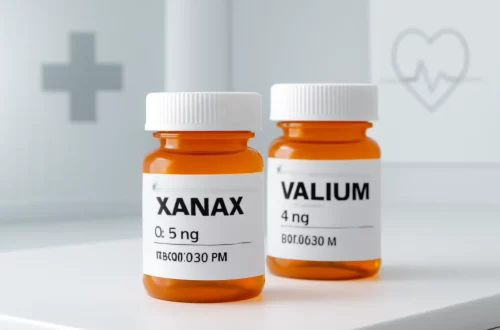
How to Use a Stop Bleeding Stick for Quick First Aid Solutions
In emergency situations, knowing how to quickly address injuries can make a significant difference. Injuries that lead to bleeding can occur unexpectedly, whether from accidents at home, during outdoor activities, or in various workplaces. The ability to manage these situations effectively can not only prevent further complications but also provide immediate comfort to those affected.
The use of first aid tools is essential in such circumstances, and one of the most valuable items in a first aid kit is the stop bleeding stick. This device is designed to help control bleeding in a quick and efficient manner. Understanding how to use it properly can empower individuals to act decisively and calmly when faced with a bleeding injury.
Effective first aid can mean the difference between a minor incident and a serious medical emergency. Therefore, familiarizing oneself with the various methods and tools available for managing bleeding is critical. This article explores the necessary steps to take when using a stop bleeding stick, ensuring that individuals are prepared to respond in a timely and effective manner when the need arises.
Understanding the Stop Bleeding Stick
The stop bleeding stick is a specialized tool designed to provide immediate assistance in controlling bleeding. It typically contains hemostatic agents, which are substances that promote blood clotting. These agents work by accelerating the body’s natural clotting process, making them invaluable in first aid situations.
The design of a stop bleeding stick often resembles a standard applicator, allowing for easy and precise application to the wound. This ease of use is crucial, especially in emergencies where every second counts. The stick’s formulation may include various components, such as chitosan, which is derived from shellfish and has been proven effective in stopping bleeding.
One of the primary advantages of using a stop bleeding stick is its portability. Designed to fit conveniently within a first aid kit, it is lightweight and easy to carry, making it accessible for outdoor adventures or on-the-go lifestyles. Its compact nature ensures that individuals can have it on hand when unexpected situations arise.
Moreover, the versatility of the stop bleeding stick makes it suitable for a wide range of injuries. Whether dealing with minor cuts or more significant wounds, the application of this tool can provide much-needed assistance. The stick can be used on various body parts, including arms, legs, and even the scalp, making it a multifunctional addition to any first aid arsenal.
In summary, the stop bleeding stick emerges as an essential component of effective first aid. With its ability to promote clotting and its user-friendly design, it serves as a reliable tool for anyone looking to be prepared for potential bleeding emergencies. Understanding its functionality lays the groundwork for utilizing it effectively when the need arises.
How to Apply a Stop Bleeding Stick
Using a stop bleeding stick requires a few straightforward steps to ensure that it is applied effectively. First and foremost, it is important to remain calm and assess the situation. Identifying the source of the bleeding and determining the severity of the wound will guide the application process.
Once the bleeding site has been identified, the first step is to clean the area around the wound if possible. This may involve gently rinsing the area with clean water to remove any dirt or debris. However, in emergency situations where water may not be available, it is still crucial to proceed with the application promptly.
Next, the stop bleeding stick should be removed from its packaging. It is essential to follow the manufacturer’s instructions for use, as different products may vary slightly in their application methods. Generally, the stick should be pressed gently against the bleeding site. The pressure applied helps to ensure that the hemostatic agents are effectively delivered to the wound.
It is important to hold the stick in place for a sufficient amount of time, typically around 3-5 minutes, to allow the clotting process to take effect. During this time, it is vital to monitor the patient for any signs of shock or worsening condition. If the bleeding does not stop within this timeframe, further medical assistance should be sought immediately.
Once the bleeding has been controlled, it is advisable to cover the wound with a sterile bandage or dressing. This helps to protect the area from infection and further injury. Additionally, providing comfort and reassurance to the injured person is crucial during this process, as medical emergencies can often be distressing.
In conclusion, applying a stop bleeding stick is a manageable process that can significantly aid in controlling bleeding. By remaining calm and following the proper steps, individuals can effectively utilize this tool to provide immediate assistance while waiting for professional medical help if needed.
Safety Precautions When Using First Aid Tools
While the stop bleeding stick is a powerful tool for managing bleeding, it is essential to prioritize safety when using any first aid supplies. Understanding and implementing safety precautions can help minimize the risk of further injury to both the person administering first aid and the injured individual.
First, it is crucial to ensure that the first aid kit, including the stop bleeding stick, is readily accessible and well-stocked. Regularly checking the contents of the kit and replacing any expired or used items will ensure that all tools are available when needed. This preparation can significantly enhance the effectiveness of first aid responses.
Another important safety measure is to wear gloves when handling blood or open wounds. This helps to protect both the first aider and the injured person from potential infections. Disposable gloves should be included in every first aid kit, and they should be worn whenever there is a risk of contact with blood or bodily fluids.
Additionally, it is essential to maintain a clear understanding of the signs of infection or complications that may arise after a bleeding incident. If a wound appears to be worsening, shows signs of infection, or does not heal properly, it is vital to seek medical attention promptly. Knowing when to escalate care can prevent minor injuries from becoming serious health issues.
Furthermore, it is beneficial to undergo first aid training to gain a comprehensive understanding of how to use various first aid tools effectively. Training programs often provide valuable insights into best practices, ensuring that individuals are well-prepared to respond to emergencies with confidence and skill.
In summary, prioritizing safety when using first aid tools is paramount. By adhering to safety precautions, individuals can enhance the effectiveness of their first aid responses while minimizing risks to themselves and those they are assisting.
When to Seek Professional Medical Help
Even with the effective use of a stop bleeding stick, there will be instances when professional medical help is necessary. Recognizing the signs that indicate the need for additional medical intervention is crucial for ensuring the well-being of the injured person.
If the bleeding does not stop after applying the stop bleeding stick for the recommended duration, it is vital to seek immediate medical assistance. Uncontrolled bleeding can lead to severe complications, including shock or excessive blood loss, which can be life-threatening.
Additionally, if the injury is deep or large, it may require stitches or more advanced medical care. Wounds that involve significant tissue damage or are located in sensitive areas, such as the abdomen or chest, should be evaluated by healthcare professionals.
Signs of infection also warrant professional evaluation. If the wound develops increased redness, swelling, warmth, or discharge, it may indicate an infection that requires medical treatment. Fever or worsening pain in the area can also be signs of a serious condition that needs attention.
Moreover, individuals with pre-existing medical conditions, such as clotting disorders or those on anticoagulant medications, should seek medical help even for minor bleeding incidents. These individuals may be at higher risk for complications, and timely medical intervention can be critical.
In conclusion, while the stop bleeding stick is an effective tool for managing bleeding, understanding when to seek professional medical help is equally important. By recognizing the signs that indicate the need for additional care, individuals can ensure that they provide the best possible support to those in need.
**Disclaimer:** This article is intended for informational purposes only and does not constitute medical advice. Always consult a healthcare professional for medical concerns or emergencies.




